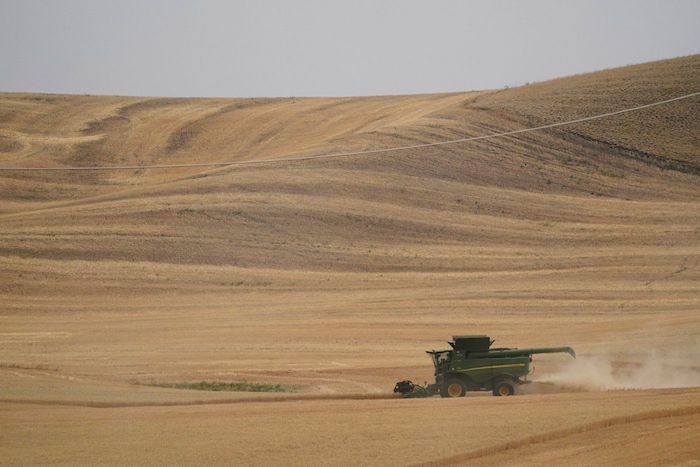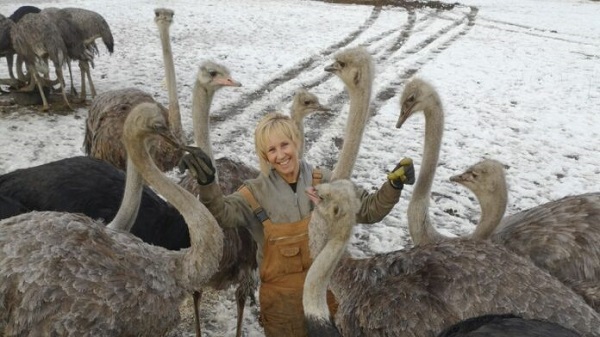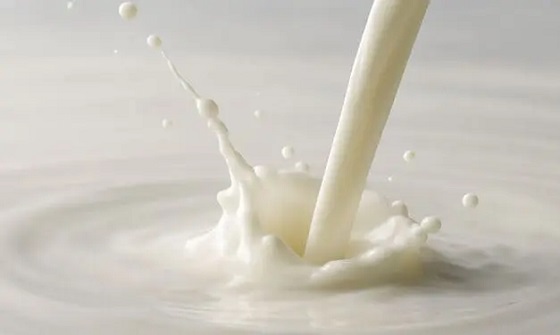Agriculture
Farm for food not fear

From the Frontier Centre for Public Policy
By Lee Harding
Fall harvest is in the storehouse. Now, let’s put away all proposals to cap fertilizer inputs to save the earth. Canadian farmers are ensuring food security, not fueling the droughts, fires, or storms that critics unfairly attribute to them.
The Saskatoon-based Global Institute for Food Security (GIFS) did as fulsome an analysis as possible on carbon emissions in Saskatchewan, Western Canada, Canada, and international peers. Transportation, seed, fertilizer and manure, crop inputs, field activities, energy emissions, and post-harvest work were all in view.
The studies, published last year, had very reassuring results. Canadian crop production was less carbon intensive than other places, and Western Canada was a little better yet. This proved true crop by crop.
Carbon emissions per tonne of canola production were more than twice as high in France and Germany as in Canada. Australia was slightly less carbon intensive than Canada, but still trailed Western Canada.
For non-durum wheat, Canada blew Australia, France, Germany, and the U.S. away with roughly half the carbon intensity of those countries. For durum wheat, the U.S. had twice the carbon intensity of Canada, and Italy almost five times as much.
Canada was remarkably better with lentil production. Producers in Australia had 5.5 times the carbon emissions per tonne produced as Canada, while the U.S. had 8 times as much. In some parts of Canada, lentil production was a net carbon sink.
Canadian field peas have one-tenth the carbon emissions per tonne of production as is found in Germany, and one-sixth that of France or the United States.
According to GIFS, Canada succeeds by “regenerative agriculture, including minimal soil disturbance, robust crop rotation, covering the land, integrating livestock and the effective management of crop inputs.”
The implementation of zero-till farming is especially key. If the land isn’t worked up, most nutrients and gases stay in the soil–greenhouse gases included.
Western Canada has been especially keen to adopt the zero-till approach, in contrast to the United States, where only 30 percent of cropland is zero-till.
The adoption of optimal methods has already lowered Canadian carbon emissions substantially. Despite all of this, some net zero schemers aim to cut carbon emissions by fertilizer by 30 percent, just as it does in other sectors.
This target is undeserved for Canadian agriculture because the industry has already made drastic, near-maximum progress. Nitrates help crops grow, so the farmer is already vitally motivated to keep nitrates in the soil and out of the skies–alleged global warming or not. Fewer nutrients mean fewer yields and lower proteins.
The farmer’s personal and economic interests already motivate the best fertilizer use that is practically possible. Universal adoption of optimal techniques could lower emissions a bit more, but Canada is so far ahead in this game that a hard cap on fertilizer emissions could only be detrimental.
In 2021, Fertilizer Canada commissioned a study by MNP to estimate the costs of a 20 percent drop in fertilizer use to achieve a 30 percent reduction in emissions. The study suggested that by 2030, bushels of production per acre would drop significantly for canola (23.6), corn (67.9), and spring wheat (36.1). By 2030, the annual value of lost production for those crops alone would reach $10.4 billion.
If every animal and human in Canada died, leaving the country an unused wasteland, the drop in world greenhouse gas emissions would be only 1.4 percent. Any talk of reducing capping fertilizer inputs for the greater good is nonsense.
Lee Harding is a Research Fellow for the Frontier Centre for Public Policy.
Agriculture
Canada Greenlights Mass Culling of 400 Research Ostriches Despite Full Recovery from Bird Flu Months Ago

 Nicolas Hulscher, MPH
Nicolas Hulscher, MPH
Federal court upholds CFIA’s reckless cull order—setting a dangerous precedent for the unscientific mass depopulation of genetically important animals.
In March, I interviewed Katie Pasitney of Universal Ostrich and Connie Shields to discuss the alarming implications of the Canadian Food Inspection Agency (CFIA) order to cull 400 research ostriches at Universal Ostrich Farm in British Columbia over bird flu:
Canada Orders Mass Culling of 400 Research Ostriches Over Bird Flu, Refuses to Test Surviving Birds for Natural Immunity
·The Canadian Food Inspection Agency (CFIA) has ordered the culling of 400 ostriches at Universal Ostrich Farm in British Columbia, citing concerns over H5N1 bird flu. However, this decision is not based on sound science and could have serious consequences for both food security and medical research.
Universal Ostrich Farm is a research facility focused on studying the unique antibody-producing capabilities of ostriches. Their research has demonstrated potential in neutralizing viruses, bacteria, and even COVID-19, making it an important contribution to medical science.
In December 2024, the CFIA claimed that two deceased ostriches—which had been lying outside for over 16 hours—tested positive for H5N1 via PCR testing. Just 41 minutes after receiving these results, the CFIA signed an order to cull the entire flock.
The CFIA initially granted the farm an exemption, recognizing the birds as “genetically important.” Later, without clear justification, they reversed this decision, ordering their destruction.
Despite the importance of this research, the CFIA has refused to conduct further testing on the birds and has banned the farm from conducting its own tests, under threat of heavy fines and possible imprisonment. Why is the Canadian government refusing to study the potential antibodies ostriches have developed against H5N1 bird flu?
On January 31, 2025, a court granted a temporary stay of execution, halting the cull. However, the CFIA is appealing this decision, which means the culling could still proceed.
Today, we have received news that the reckless mass cull order will proceed despite their ostriches having already recovered months ago and developed natural immunity against H5N1:

Official Announcement: Federal Court Decision in Universal Ostrich Farms Inc. v. Canadian Food Inspection Agency
Dear friends and supporters,
We are absolutely devastated to share today’s Federal Court decision, issued on May 13, 2025. The court ruled in favour of the Canadian Food Inspection Agency (CFIA), upholding their order to destroy our beloved ostriches and rejecting our plea to save them.
The court’s decision accepted the CFIA’s justification under the Health of Animals Act and their use of the Stamping-Out Policy, which mandates the destruction of animals to control disease outbreaks, regardless of their health status. The court confirmed the CFIA’s approach, prioritizing trade obligations over the welfare of our animals.
In addition, we’ve been ordered to pay $15,000 in CFIA’s legal costs. You can read the full decision here: (2025 FC 878). https://saveourostriches.com/wp-content/uploads/2025/05/JR-T-294-25-and-T-432-25-Final.pdf
We are heartbroken by this outcome and uncertain about the future of our farm. As we navigate this incredibly difficult time, we ask for your patience and continued support. If you are able, please consider making a donation to help us manage the financial and emotional toll this has taken.
Thank you,
Universal Ostrich Farm
http://SaveOurOstriches.com
This deeply misguided decision sets a dangerous precedent for the Canadian government to recklessly depopulate animals at will.
By upholding the CFIA’s reckless cull order, despite the ostriches’ recovery and natural immunity, the court has prioritized trade protocols over scientific inquiry, animal welfare, and the advancement of life-saving medical research.
Epidemiologist and Foundation Administrator, McCullough Foundation
www.mcculloughfnd.org
Please consider following both the McCullough Foundation and my personal account on X (formerly Twitter) for further content.
Agriculture
Canada is missing out on the global milk boom

This article supplied by Troy Media.
 By Sylvain Charlebois
By Sylvain Charlebois
With world demand soaring, Canada’s dairy system keeps milk producers locked out of growth, and consumers stuck with high prices
Prime Minister Mark Carney is no Justin Trudeau. While the team around him may be familiar, the tone has clearly shifted. His first week in office signalled a more data-driven, technocratic approach, grounded in pragmatism rather than ideology. That’s welcome news, especially for Canada’s agri-food sector, which has long been overlooked.
Historically, the Liberal party has governed with an urban-centric lens, often sidelining agriculture. That must change. Carney’s pledge to eliminate all interprovincial trade barriers by July 1 was encouraging but whether this includes long-standing obstacles in the agri-food sector remains to be seen. Supply-managed sectors, particularly dairy, remain heavily protected by a tangle of provincially administered quotas (part of Canada’s supply management system, which controls prices and limits production through quotas and tariffs to protect domestic producers). These measures stifle innovation, limit flexibility and distort national productivity.
Consider dairy. Quebec produces nearly 40 per cent of Canada’s milk, despite accounting for just over 20 per cent of the population. This regional imbalance undermines one of supply management’s original promises: preserving dairy farms across the country. Yet protectionism hasn’t preserved diversity—it has accelerated consolidation.
In reality, the number of dairy farms continues to decline, with roughly 90 per cent now concentrated in just a few provinces. On our current path, Canada is projected to lose nearly half of its remaining dairy farms by 2030. Consolidation disproportionately benefits Quebec and Ontario at the expense of smaller producers in the Prairies and Atlantic Canada.
Carney must put dairy reform back on the table, regardless of campaign promises. The sector represents just one per cent of Canada’s GDP, yet
wields outsized influence on policy, benefiting fewer than 9,000 farms out of more than 175,000 nationwide. This is not sustainable. Many Canadian producers are eager to grow, trade and compete globally but are held back by a system designed to insulate rather than enable.
It’s also time to decouple dairy from poultry and eggs. Though also supply managed, those sectors operate with far more vertical integration and
competitiveness. Industrial milk prices in Canada are nearly double those in the United States, undermining both our domestic processors and consumer affordability. These high prices don’t just affect farmers—they directly impact Canadian consumers, who pay more for milk, cheese and other dairy products than many of their international counterparts.
The upcoming renegotiation of CUSMA—the Canada-United States-Mexico Agreement, which replaced NAFTA—is a chance to reset. Rather than resist change, the dairy sector should seize the opportunity to modernize. This includes exploring a more open quota system for export markets. Reforms could also involve a complete overhaul of the Canadian Dairy Commission to increase transparency around pricing. Canadians deserve to know how much milk is wasted each year—estimated at up to a billion litres—and whether a strategic reserve for powdered milk, much like our existing butter reserve, would better serve national food security.
Global milk demand is rising. According to The Dairy News, the world could face a shortage of 30 million tonnes by 2030, three times Canada’s current annual production. Yet under current policy, Canada is not positioned to contribute meaningfully to meeting that demand. The domestic focus on protecting margins and internal price fairness is blinding the sector to broader market realities.
We’ve been here before. The last time CUSMA was renegotiated, Canada offered modest concessions to foreign competitors and then overcompensated its dairy sector for hypothetical losses. This created an overcapitalized industry, inflated farmland prices and diverted attention from more pressing trade and diplomacy challenges, particularly with India and China. This time must be different: structural reform—not compensation—should be the goal.
If Carney is serious about rebooting the Canadian economy, agri-food must be part of the conversation. But that also means the agriculture sector must engage. Industry voices across the country need to call on dairy to evolve, embrace change and step into the 21st century.
Dr. Sylvain Charlebois is a Canadian professor and researcher in food distribution and policy. He is senior director of the Agri-Food Analytics Lab at Dalhousie University and co-host of The Food Professor Podcast. He is frequently cited in the media for his insights on food prices, agricultural trends, and the global food supply chain.
Troy Media empowers Canadian community news outlets by providing independent, insightful analysis and commentary. Our mission is to support local media in helping Canadians stay informed and engaged by delivering reliable content that strengthens community connections and deepens understanding across the country.
-

 Bruce Dowbiggin1 day ago
Bruce Dowbiggin1 day agoWOKE NBA Stars Seems Natural For CDN Advertisers. Why Won’t They Bite?
-

 Health1 day ago
Health1 day agoLast day and last chance to win this dream home! Support the 2025 Red Deer Hospital Lottery before midnight!
-

 Crime20 hours ago
Crime20 hours agoUK finally admits clear evidence linking Pakistanis and child grooming gangs
-

 conflict8 hours ago
conflict8 hours agoTrump: ‘We’ have control over Iranian airspace; know where Khomeini is hiding
-

 Business1 day ago
Business1 day agoCarney praises Trump’s world ‘leadership’ at G7 meeting in Canada
-

 conflict1 day ago
conflict1 day agoIsrael bombs Iranian state TV while live on air
-

 Energy1 day ago
Energy1 day agoCould the G7 Summit in Alberta be a historic moment for Canadian energy?
-

 Crime1 day ago
Crime1 day agoMinnesota shooter arrested after 48-hour manhunt




